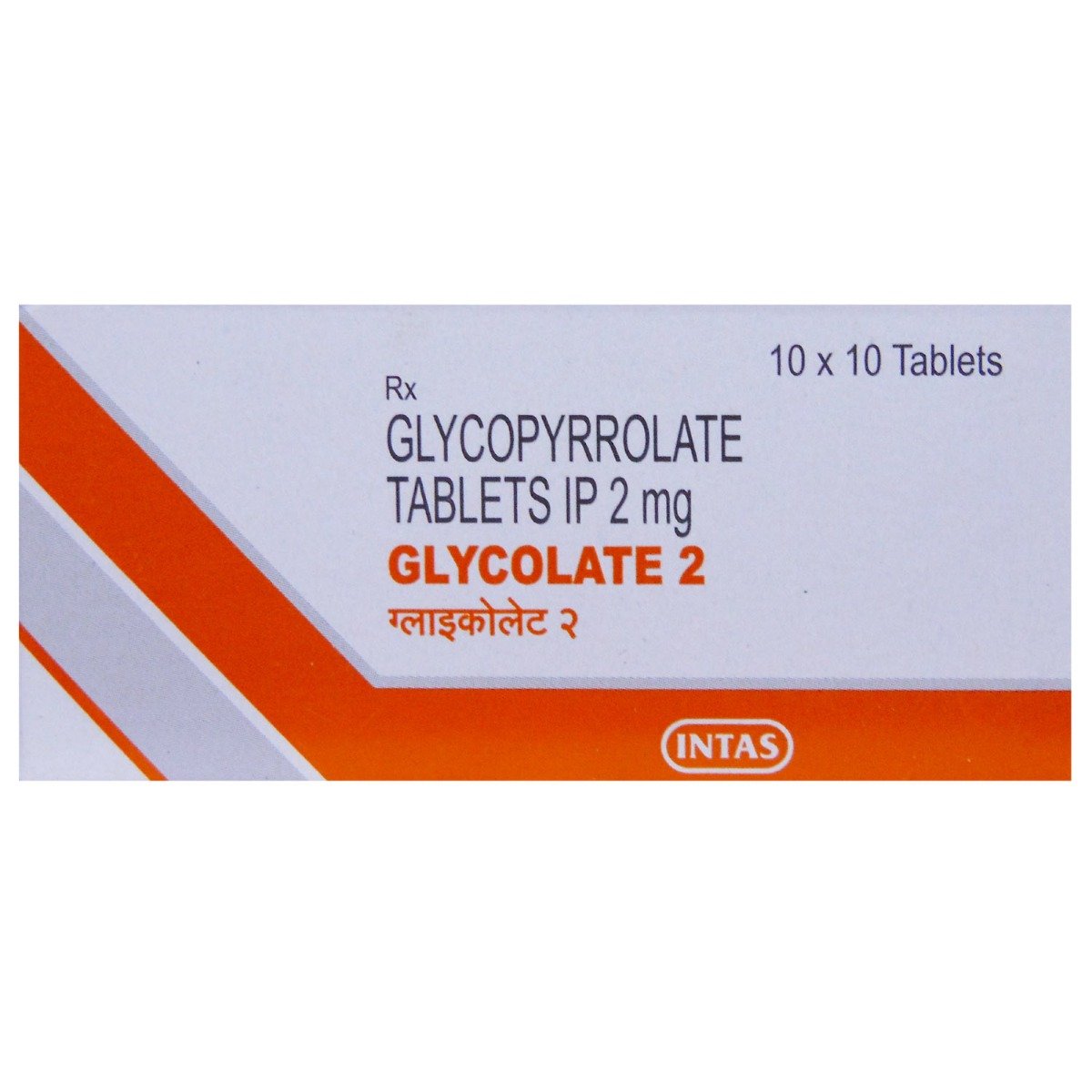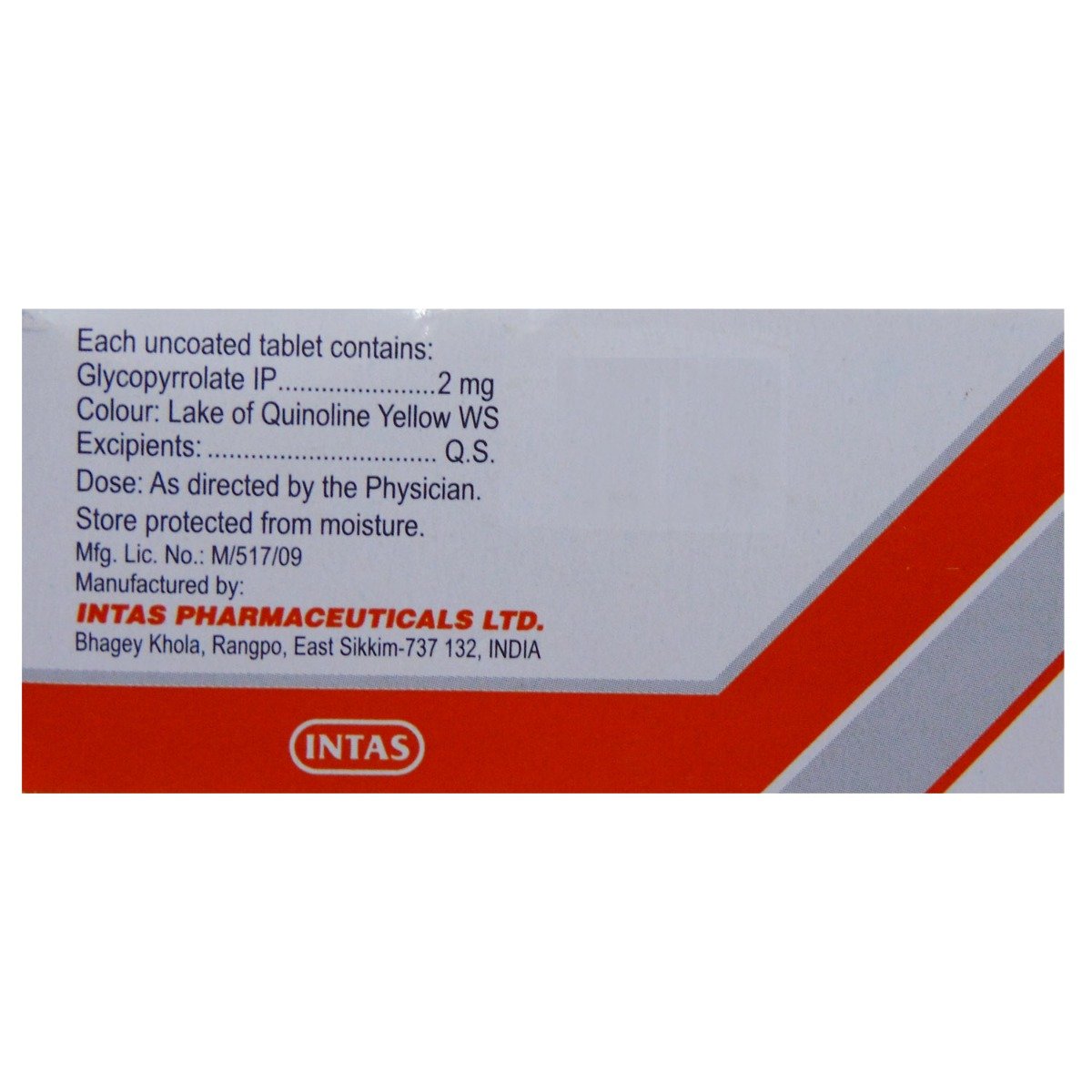Glycolate 2 Tablet



MRP ₹218
(Inclusive of all Taxes)
₹32.7 Cashback (15%)
know your delivery time
Provide Delivery Location
Composition :
Manufacturer/Marketer :
Consume Type :
Expires on or after :
Return Policy :

Secure Payment

Trusted by 8 Crore Indians

Genuine Products
Therapeutic Class
Country of origin
Manufacturer/Marketer address
Author Details
We provide you with authentic, trustworthy and relevant information
Disclaimer
Alcohol
Safe if prescribed
It is not known if alcohol interacts with Glycolate 2 Tablet . Please consult your doctor.
Pregnancy
Consult your doctor
Consult your doctor before taking Glycolate 2 Tablet if you are pregnant; your doctor will prescribe only if the benefits outweigh the risks.
Breast Feeding
Consult your doctor
Consult your doctor before taking Glycolate 2 Tablet if you are breastfeeding; your doctor will decide whether Glycolate 2 Tablet can be taken by breastfeeding mothers or not.
Driving
Safe if prescribed
Glycolate 2 Tablet may cause sleepiness and blurred vision. Do not drive or operate machinery unless you are alert.
Liver
Consult your doctor
If you have liver problems, please inform your doctor before taking this medicine.
Kidney
Consult your doctor
If you have kidney problems, please inform your doctor before taking this medicine.
Children
Safe if prescribed
Tablet: It is not recommended for children as safety and effectiveness have not been established. Oral solution: It can be given to children above 3 years if prescribed by a doctor. The safety and effectiveness have not been established in children below 3 years.
Product Substitutes
About Glycolate 2 Tablet
Glycolate 2 Tablet belongs to the group of medications called ‘anticholinergics’ primarily used to treat peptic ulcers in adults and children above 12 years. It is also used to treat severe drooling caused by certain neurologic disorders (cerebral palsy) in children 3 to 16 years of age. Peptic ulcers are sores that develop on the lining of the stomach and intestine due to erosion of the stomach's protective lining.
Glycolate 2 Tablet contains ‘Glycopyrrolate’, which decreases stomach acid and saliva production by blocking the activity of a certain natural substance in the body. Thereby helps treat peptic ulcers and drooling.
You are advised to take Glycolate 2 Tablet for as long as your doctor has prescribed it for you, depending on your medical condition. In some cases, Glycolate 2 Tablet may cause dry mouth, vomiting, flushing, headache, and nasal congestion. Most of these side effects of Glycolate 2 Tablet do not require medical attention and gradually resolve over time. However, if the side effects persist or worsen, please consult your doctor.
Inform your doctor if you are allergic to any of the components in Glycolate 2 Tablet . Consult your doctor if you are pregnant or breastfeeding. Glycolate 2 Tablet may cause sleepiness and blurred vision, do not drive or operate machinery unless you are alert. Let your doctor know if you are taking any prescription and non-prescription medications, including vitamins and herbal supplements.
Uses of Glycolate 2 Tablet
Medicinal Benefits Mweb
Key Benefits
Glycolate 2 Tablet belongs to the group of medications called ‘anticholinergics’ primarily used to treat peptic ulcers in adults and children above 12 years. It is also used to treat severe drooling caused by certain neurologic disorders (cerebral palsy) in children 3 to 16 years of age. Glycolate 2 Tablet contains ‘Glycopyrrolate’, which decreases stomach acid and saliva production by blocking the activity of a certain natural substance in the body. Thereby helps treat peptic ulcers and drooling.
Directions for Use
Side Effects of Glycolate 2 Tablet
- Dry mouth
- Vomiting
- Flushing
- Constipation
- Nasal congestion
Drug Warnings
If you are allergic to Glycolate 2 Tablet or any other medicines, please tell your doctor. If you are pregnant or a breastfeeding mother, it is advised to consult a doctor before using Glycolate 2 Tablet . Let your doctor know if you are taking any prescription and non-prescription medications, including vitamins and herbal supplements. Inform your doctor if you have autonomic neuropathy, hyperthyroidism, urination problems, a blockage in your stomach or intestines, severe constipation, ulcerative colitis, glaucoma, myasthenia gravis, bleeding problems, blood circulation problems, enlarged prostate, liver/ kidney diseases.
Drug-Drug Interactions
Drug-Drug Interactions
Login/Sign Up
Co-administration of Digoxin and Glycolate 2 Tablet may increase the serum concentration of Digoxin and increase the risk or severity of adverse effects.
How to manage the interaction:
Although there is a possible interaction between Digoxin and Glycolate 2 Tablet, you can take these medicines together if prescribed by a doctor. However, if you experience sudden dizziness, lightheadedness, fainting, shortness of breath, confusion, loss of appetite, nausea, vomiting, diarrhea, change in vision such as blurry or yellow vision, fatigue, and fast or irregular heartbeat, contact your doctor immediately. Do not discontinue any medications without first consulting your doctor.
The use of Potassium chloride and Glycolate 2 Tablet can increase the irritant effects of potassium on your stomach and upper intestine.
How to manage the interaction:
Using Potassium chloride and Glycolate 2 Tablet together can lead to an interaction, however, it can be taken if advised by a doctor. However, if you experience severe stomach pain, bloating, sudden lightheadedness or dizziness, nausea, vomiting (especially with blood), decreased hunger, or dark, tarry stools, consult the doctor immediately. Do not discontinue any medications without a doctor's advice.
Taking Pramlintide with Glycolate 2 Tablet can cause slow stomach emptying or slow the intestinal absorption of nutrients.
How to manage the interaction:
Although using Pramlintide and Glycolate 2 Tablet together can lead to an interaction, it can be taken if advised by your doctor.
The combined use of secretin and Glycolate 2 Tablet can inhibit gastric acid secretion.
How to manage the interaction:
Although using secretin and Glycolate 2 Tablet together can lead to an interaction, it can be taken if advised by your doctor.
Coadministration of levodopa with Glycolate 2 Tablet can significantly decrease the blood levels of levodopa.
How to manage the interaction:
Although using Glycolate 2 Tablet and levodopa together can lead to an interaction, it can be taken if advised by your doctor. However, if you experience any unusual symptoms contact the doctor immediately. Do not stop using any medications without a doctor's advice.
Drug-Food Interactions
Drug-Food Interactions
Login/Sign Up
Drug-Diseases Interactions
Drug-Diseases Interactions
Login/Sign Up
Drug-Drug Interactions Checker List
- ATROPINE
- NEOSTIGMINE
- PYRIDOSTIGMINE
- TOPIRAMATE
- DIPHENHYDRAMINE
Habit Forming
Diet & Lifestyle Advise
Peptic ulcers:
- Eat smaller meals more often.
- Avoid smoking and alcohol consumption.
- Maintain a healthy weight by regular exercising.
- Avoid lying down after eating to prevent acid reflux.
- Avoid tight-fitting clothes as it might increase the pressure on the abdomen leading to acid reflux.
- Practice relaxation techniques and avoid stress by doing yoga or meditation.
- Avoid foods such as high-fat food, spicy food, chocolates, citrus fruits, pineapple, tomato, onion, garlic, tea, and soda.
- Avoid sitting continuously as it may trigger acidity. Take a break of 5minutes break every hour by doing brisk walking or stretching.
All Substitutes & Brand Comparisons
RX
Out of StockGcolate 2mg Tablet
Icon Life Sciences
₹130
(₹11.7 per unit)
40% CHEAPER

Have a query?
Buy best C.n.s Drugs products by
Intas Pharmaceuticals Ltd
Sun Pharmaceutical Industries Ltd
Torrent Pharmaceuticals Ltd
Alkem Laboratories Ltd
Abbott India Ltd
Cipla Ltd
Alteus Biogenics Pvt Ltd
Micro Labs Ltd
Lupin Ltd
Ipca Laboratories Ltd
D D Pharmaceuticals Pvt Ltd
Icon Life Sciences
Mankind Pharma Pvt Ltd
Tripada Healthcare Pvt Ltd
Arinna Lifesciences Ltd
Linux Laboratories Pvt Ltd
East West Pharma India Pvt Ltd
La Renon Healthcare Pvt Ltd
Talent India Pvt Ltd
Tas Med India Pvt Ltd
Zydus Healthcare Ltd
Cnx Health Care Pvt Ltd
Eris Life Sciences Ltd
Leeford Healthcare Ltd
Emcure Pharmaceuticals Ltd
Macleods Pharmaceuticals Ltd
Sigmund Promedica
Aristo Pharmaceuticals Pvt Ltd
Dr Reddy's Laboratories Ltd
Troikaa Pharmaceuticals Ltd
Consern Pharma Ltd
Zydus Cadila
Shine Pharmaceuticals Ltd
Wockhardt Ltd
Ardent Life Sciences Pvt Ltd
Crescent Formulations Pvt Ltd
Theo Pharma Pvt Ltd
Reliance Formulation Pvt Ltd
Ikon Pharmaceuticals Pvt Ltd
Propel Healthcare
Neon Laboratories Ltd
Jagsam Pharma
Msn Laboratories Pvt Ltd
Morepen Laboratories Ltd
Pulse Pharmaceuticals
Sanofi India Ltd
Med Manor Organics Pvt Ltd
Hetero Healthcare Pvt Ltd
Novartis India Ltd
Crescent Therapeutics Ltd
Elder Pharmaceuticals Ltd
Solvate Laboratories Pvt Ltd
Akumentis Healthcare Ltd
Mova Pharmaceutical Pvt Ltd
Psyco Remedies Ltd
Tripada Lifecare Pvt Ltd
Ajanta Pharma Ltd
Cyrus Remedies Pvt Ltd
Medishri Healthcare Pvt Ltd
Cadila Healthcare Ltd
Glenmark Pharmaceuticals Ltd
Matteo Health Care Pvt Ltd
Hbc Life Sciences Pvt Ltd
Lyf Healthcare
Matias Healthcare Pvt Ltd
Mesmer Pharmaceuticals
Alembic Pharmaceuticals Ltd
Capital Pharma
Crescent Pharmaceuticals
Medopharm Pvt Ltd
Alniche Life Sciences Pvt Ltd
Kivi Labs Ltd
Talin Remedies Pvt Ltd
USV Pvt Ltd
Quince Lifesciences Pvt Ltd
Solis Pharmaceuticals
Infivis Life Care
Zuventus Healthcare Ltd
Cadila Pharmaceuticals Ltd
Pfizer Ltd
Wallace Pharmaceuticals Pvt Ltd
A N Pharmacia Laboratories Pvt Ltd
Blue Cross Laboratories Pvt Ltd
Jenburkt Pharmaceuticals Ltd
Lia Life Sciences Pvt Ltd
Mano Pharma
Medley Pharmaceuticals Ltd
Primus Remedies Pvt Ltd
FDC Ltd
Maneesh Pharmaceuticals Ltd
Apex Laboratories Pvt Ltd
Gagnant Healthcare Pvt Ltd
Ozone Pharmaceuticals Ltd
RPG Life Sciences Ltd
Strides Shasun Ltd
Unichem International
GlaxoSmithKline Pharmaceuticals Ltd
Kuresys Labs Pvt Ltd
LA Pharma
Trion Pharma India Llp



